
For artisanal production, SURESTE 16º has gathered ancestral knowledge and wisdom. In terms of machinery, although it seems a primitive process, sophisticated knowledge is needed.
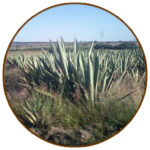
The Raw Material: The Magueys
More than 20 species of maguey are commonly used to make mezcal, and most of them grow in Oaxaca. The magueys used to make SURESTE 16º mezcal are of the highest quality and concentrate large quantities of sugars, which, after a long and delicate process, result in our excellent product.
The maguey is a product of time, patience and endurance.
 Cutting Maguey
Cutting Maguey
Our maestros mezcaleros care and cut maguey depending on two factors: when to start their reproductive stage or already shows signs that it will launch the quiote, that means its inflorescence or; let the maguey remove the quiote, then they select and wait a while before making the final cut. This is the maguey capon that concentrates sugars differently. When the times comes our masters skew the entire maguey and then removes the leaves to leave only the pineapple.
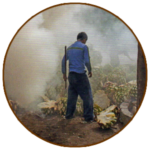 The cooking process
The cooking process
We use a conical stone oven dug into the ground; It used in Mexico for thousands of years. Its capacity ranges from three to seven tons. This baking allows hydrolysis of starch content in the mature maguey and its conversion to fructose, sweet base with fermentation and our delicate process will become SURESTE 16.
For baking, first put the wood and set on fire, then medium sized stones are arranged to form a mound on the burning wood. Usually placed above a layer to contain the heat.
At the end of cooking an artificial volcano rises and OUR HIDDEN TREASURE is unearthed: the cooked maguey now has an amber color, a smooth consistency and the sweetest flavor that one can find on earth.
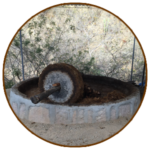 Milling
Milling
The maestro mezcalero verifies the cooking of agave and enters the mill (Tahona). It is a large cylindrical stone that turns on a small circular space paved with stone. On this space the cooked maguey to be crushed by the stone, which is pulled by one or two mules or horses.
At this point there comes abundant juice; rather, the pineapple is reduced to just wet staple fibers later in a complex and almost mystical process will be the basis of our SURESTE 16.
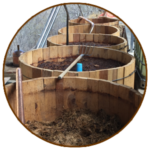 Fermentation
Fermentation
We turn to move these fibers to large fermentation tanks where we add plenty of water; this in order to activate the process. These are wood (pitch pine, juniper or other tree) made by local craftsmen that preserve this knowledge from generation to generation; its use is recommended because better retain heat and isolate the yeast in its walls. In tubs the juice ferments naturally and the process takes weeks. The tubs are always in our palenque and work at room temperature.
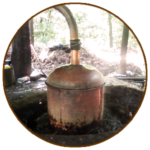 Distillation
Distillation
Once the maestro mezcalero sees that the juice is at its point, gives the approval to move it to distill. We distill as many turns as needed, without rest; always with the aim of achieving the delicate and exquisite flavor that characterizes SURESTE 16. Sometimes distillation lasts one or two days without sleep, waiting for the right moment to keep the best mezcal quality.
As tradition dictates, in Oaxaca we use the copper stills, then it passes through another thin tube in spiral called serpentin, where the steam is cooled and condensed. To this end, the serpentin is immersed in a tub of water. At the end we set a container that recives the destillate. Giving as a result our delicious and traditional mezcal SURESTE 16.






